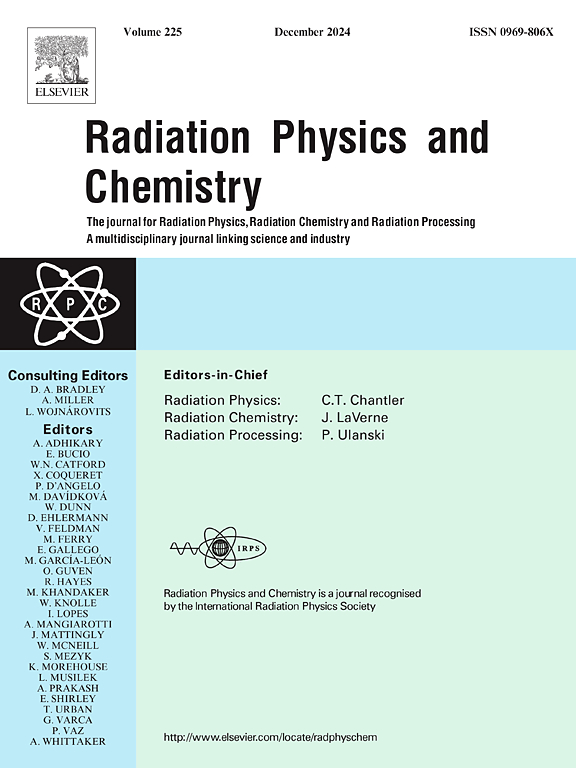Pulmonary CT angiography procedure: Radiation dose assessment and establishment of local diagnostic reference level in a single hospital in Morocco
IF 2.8
3区 物理与天体物理
Q3 CHEMISTRY, PHYSICAL
引用次数: 0
Abstract
Computed tomography pulmonary angiography (CTPA) plays a crucial role in diagnosing pulmonary embolism; however, it raises significant concerns regarding patient radiation exposure. This study aimed to assess radiation dose levels and establish local diagnostic reference levels (LDRLs) for CTPA in Morocco. A total of 555 patients undergoing CTPA examinations in a single hospital were included. Data collected included demographic information, exposure parameters, and dosimetric indicators such as dose-length product (DLP) and volume computed tomography dose index (CTDIvol). The LDRLs were determined based on the 75th percentile (3rd quartile) values of these dosimetric indicators. The LDRLs were established at 439.3 mGy.cm for DLP and 41.07 mGy for CTDIvol. Compared to international studies, our DLP values were higher than those reported in the Netherlands, Ireland, Malaysia, and Greece but lower than those from Saudi Arabia, Switzerland, and the United Kingdom. In contrast, our CTDIvol values were significantly higher than all previously reported studies. These findings highlight the need to address elevated radiation doses in CTPA examinations. This study underscores the importance of dose assessment and optimization to reduce radiation exposure while maintaining diagnostic image quality. Implementing dose reduction strategies is essential to improve patient safety and align local practices with international standards.
求助全文
约1分钟内获得全文
求助全文
来源期刊

Radiation Physics and Chemistry
化学-核科学技术
CiteScore
5.60
自引率
17.20%
发文量
574
审稿时长
12 weeks
期刊介绍:
Radiation Physics and Chemistry is a multidisciplinary journal that provides a medium for publication of substantial and original papers, reviews, and short communications which focus on research and developments involving ionizing radiation in radiation physics, radiation chemistry and radiation processing.
The journal aims to publish papers with significance to an international audience, containing substantial novelty and scientific impact. The Editors reserve the rights to reject, with or without external review, papers that do not meet these criteria. This could include papers that are very similar to previous publications, only with changed target substrates, employed materials, analyzed sites and experimental methods, report results without presenting new insights and/or hypothesis testing, or do not focus on the radiation effects.
 求助内容:
求助内容: 应助结果提醒方式:
应助结果提醒方式:


